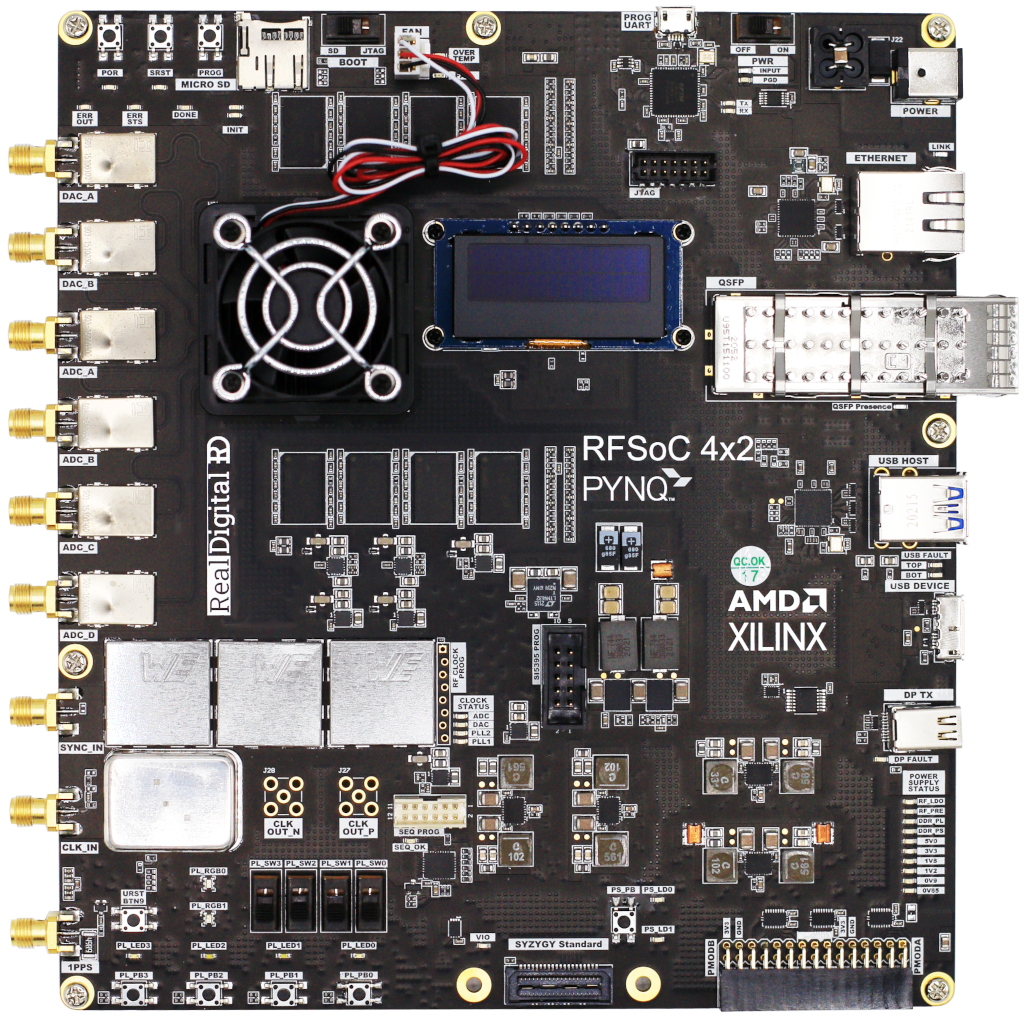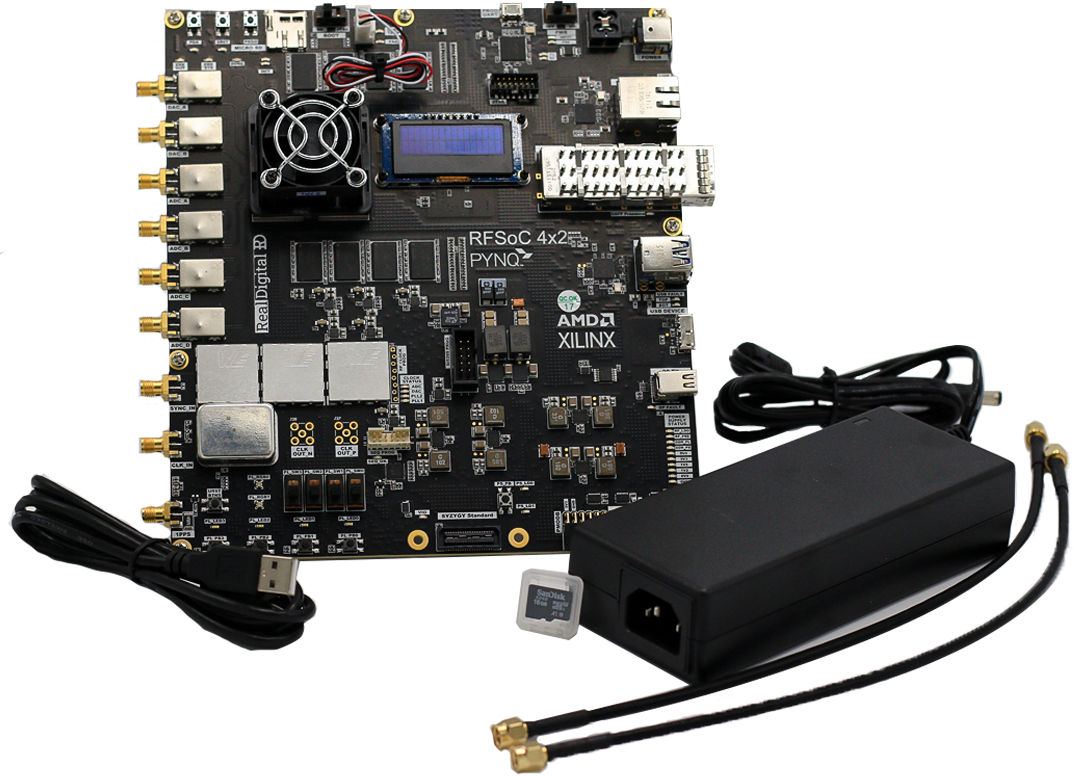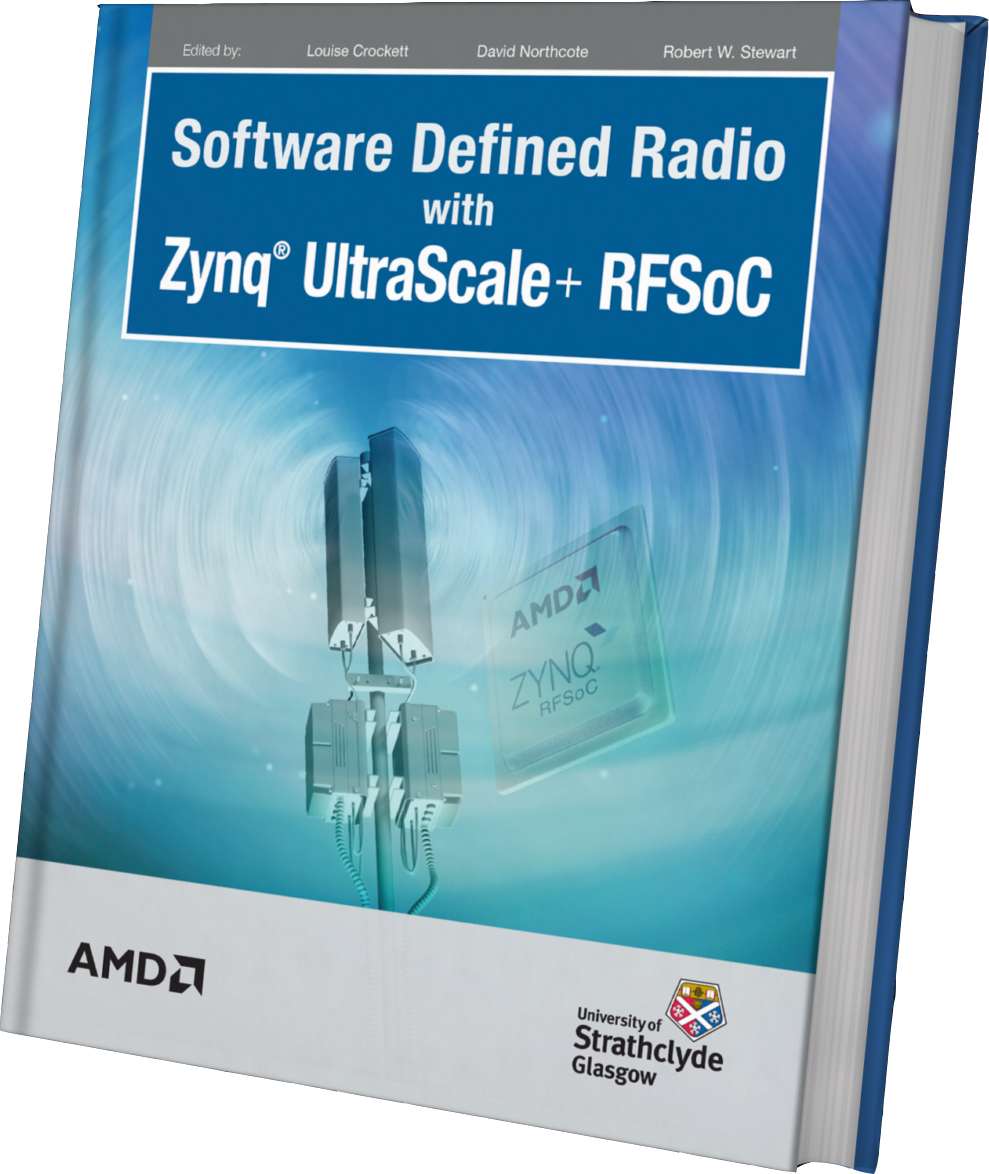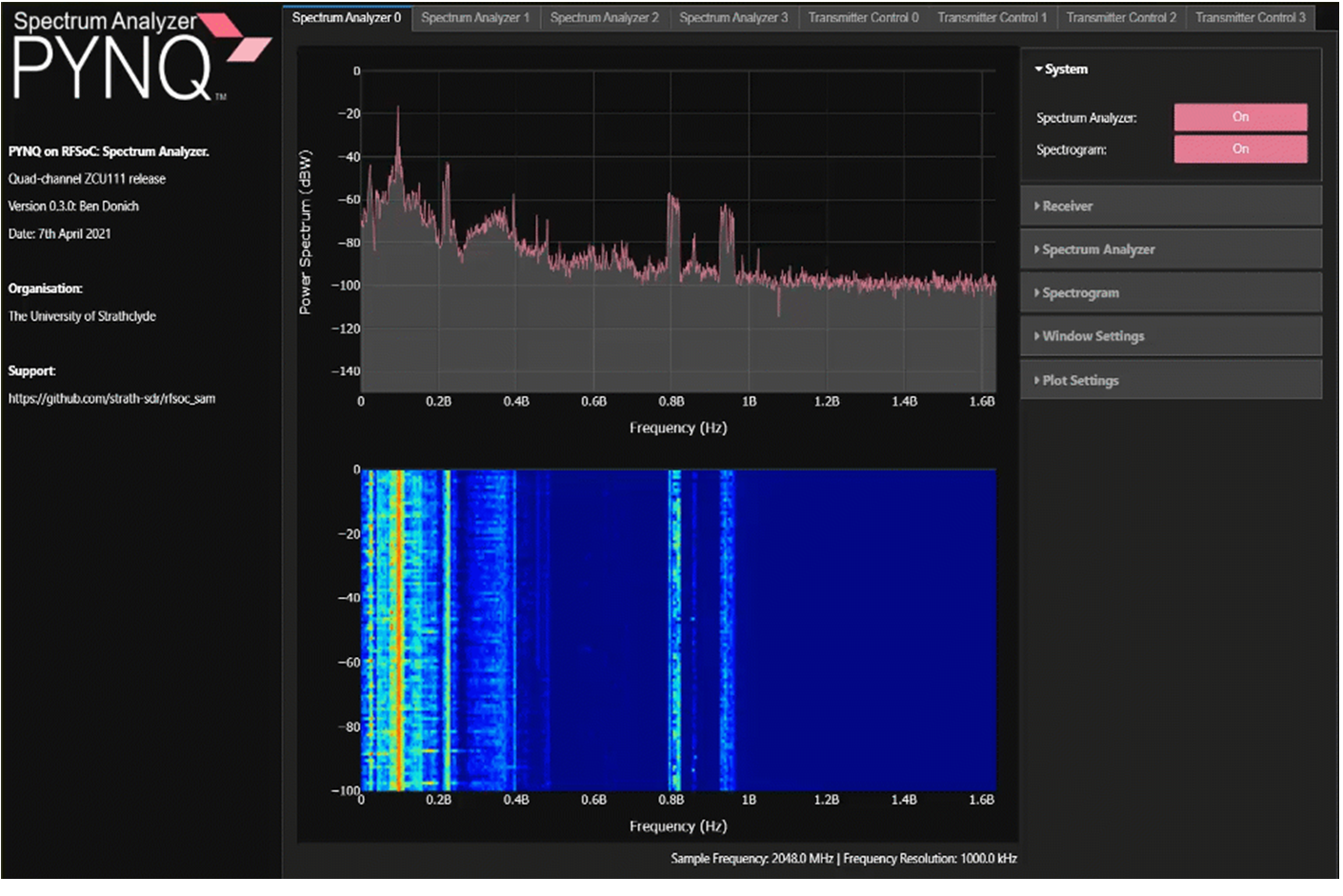RFSoC 4x2
- QSFP28 port for 4x25, 2x50 or 1x100 Gbps Ethernet & 10/100/1000 Ethernet port
- 8 GBytes of 2400MHz DDR4 (4Gbytes for PS and 4GBytes for PL)
- Ultra-stable, ZCU208 compatible clocking subsystem
- Extensive tutorials and overlays including spectrum analyzer
- Supported by PYNQ open-source framework with Python & Jupyter notebooks
All customers must complete the End Use Form prior to purchase.
To purchase at the academic price you must complete this form. If approved, AMD will send a redemption code for use during checkout.
To pay by wire transfer, send a purchase order to contact@realdigital.org. To request a quote, please email us at contact@realdigital.org.
Free Textbook: Software Defined Radio with Zynq UltraScale+ RFSoC
AMD’s RFSoC device integrates high-speed RF signal chains, programmable logic, and multi-core ARM processors into an exceptionally powerful analog/digital system on chip. This 720 page full-color textbook includes 30+ open-source Jupyter Notebooks, and presents:
- The RF signal chains and their high-resolution direct RF data converters
- Digital up- and down-converters and quadrature mixers
- Multi-Nyquist zone operation, frequency planning, and multi-rate FIR filters and FFTs
- Software defined radio concepts and architectures
- RFSOC applications in Cellular networks
- MIMO systems and beamforming
- Other demanding analog/digital applications like radioastronomy and quantum computing
The PYNQ Framework, Jupyter Notebooks, Overlays, and Tutorials
The PYNQ framework greatly simplifies the process of using customized hardware in digital systems, and brings a whole new level of visualization and analysis tools to RF design environments. PYNQ uses Jupyter Notebooks, and provides a Python-based interface to configure and control programmable logic without the need for ASIC-style, hardware-centric design tools. The PYNQ framework allows the RFSoC’s resources to be accessed and controlled through prebuilt interfaces running on an attached PC, and it includes several tools for waveform visualization and analysis. PYNQ configurations are open source and can serve as a launch point for fully custom designs.
Jupyter Notebooks are open-source web applications for creating and sharing documents that contain live code, equations, visualizations, and text. A notebook can run code, interact with devices, display live data, and present in-line explanations, formulas, and charts to make your work more transparent, understandable, repeatable, and shareable. RFSoC notebooks include programmable logic configurations (overlays), ARM application code, browser code to configure the board and display data – in short, everything needed to create a powerful and intuitive RF signal analysis tool.
- Xilinx Gen 3 Zynq UltraScale+ RFSoC ZU48DR
- Quad core ARM Cortex-A53, Dual core ARM Cortex–R5F
- Programmable Logic with 930K logic cells, 4272 DSP slices, 38Mb block RAM
- 4x 5GSPS RF ADCs SMA ports
- 2x 9.85GSP RF DACs SMA ports
- External clock and sync ports
- 4 GB 64-bit 2400MHz Processing System memory
- 4 GB 64-bit 2400MHz Programmable Logic memory
- 10/100/1000 Mbps Ethernet
- 100G Ethernet MAC/PCS w/RS-FEC (QSFP28)
- 2 USB3 host ports and USB3 slave port
- USB2 port for JTAG, UART and COM
- Mini DisplayPort
- Multiple high-accuracy and programmable clock sources
- Active power monitoring (current and voltage) for all supplies
- Battery-backed real time clock
- OLED display, 4 LEDs, 2 RGB LEDs
- 4 slide switches, 6 pushbuttons
- Standard SYZYGY port, Pmod+ port (two Pmods)
- RFSoC board
- 120W power supply
- 2 SMA cables
- 16GB MicroSD card preloaded with PYNQ image
- USB cable



